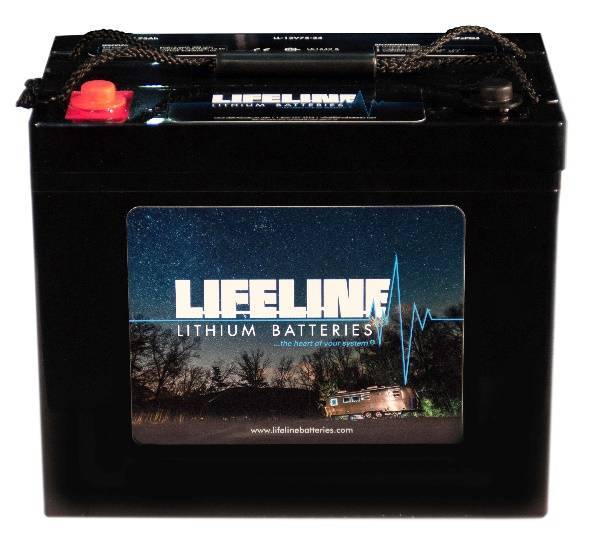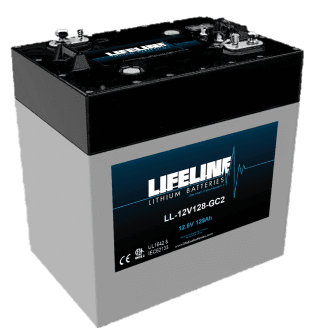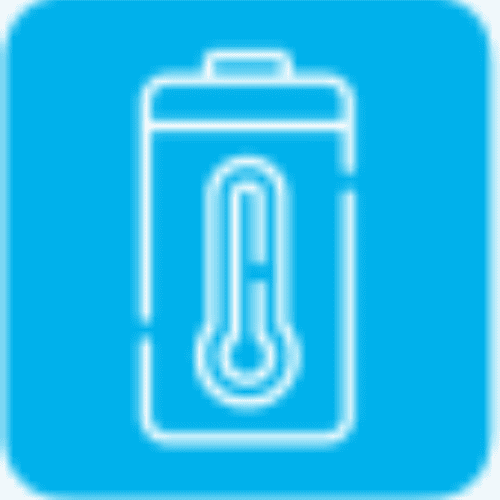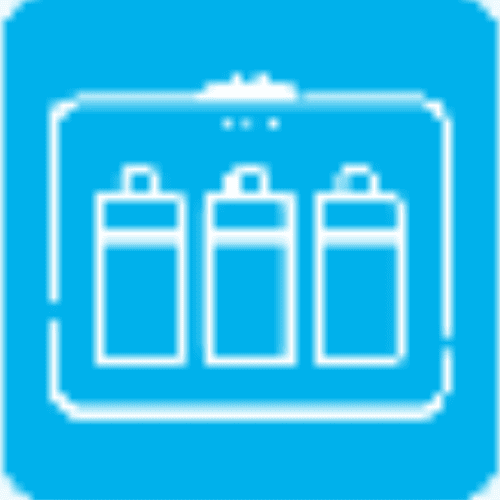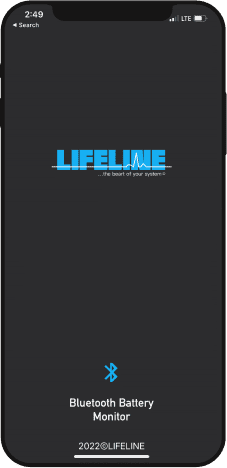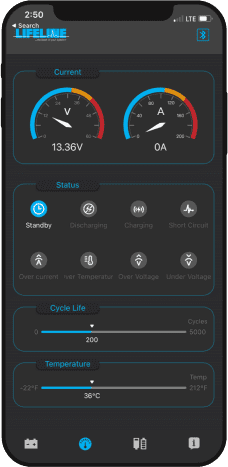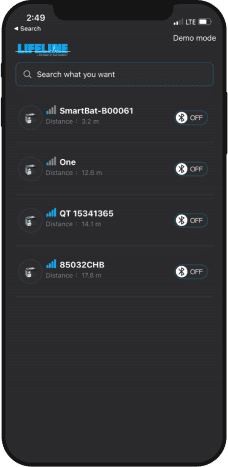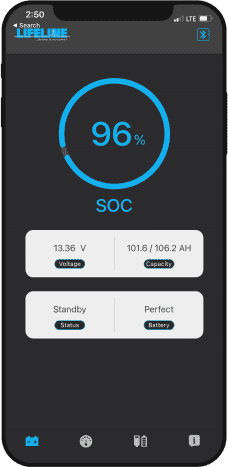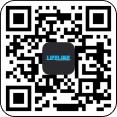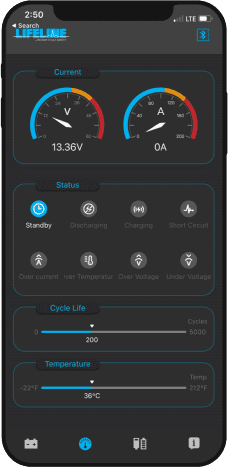
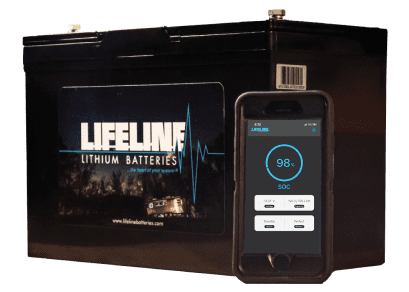
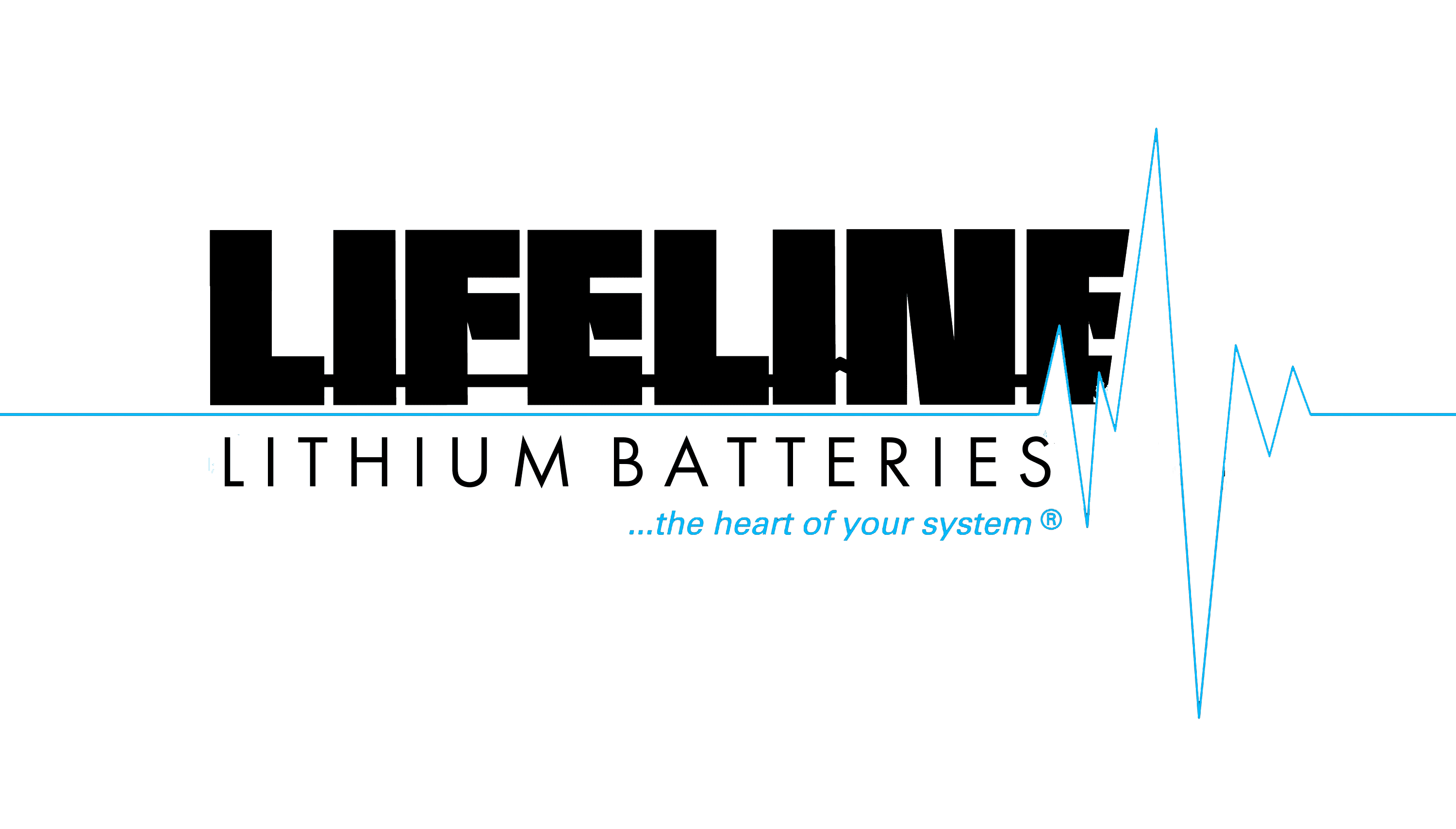
LiFePO4 Batteries
Lithium Batteries with Bluetooth Connectivity! Easily monitor the status of your battery bank from your mobile device.
Lifeline Lithium batteries are made to help you Power Your Passion.
Specifically designed for the RV & Marine industries, Lifeline Lithium batteries will continue to power your electronics for years to come.
Lifeline Lithium batteries offer the most amount of usable energy in the smallest sizes in the market today. The LL-12V100-24 is 100 Amp Hours (1280 Watt Hours) of usable energy in the size of a standard Group 24, and the LL-12V128-GC2 is 128 Amp Hours in the size of a standard Golf Cart (GC2) size battery. With the amount of usable energy available and extremely long cycle life, 1 Lifeline Lithium battery can easily take the place of 2 lead-acid batteries.


-

DROP-IN" FIT
Lifeline Lithium batteries are a drop-in fit replacement for most standard lead acid battery sizes

INTERNAL HEATING
The built in Battery Management System allows for cold temperature charging down to -4/°F/-20°C and discharging as low as -22°F/-30°C.

BLUETOOTH
With a built in Bluetooth chip, you can easily monitor the status of each of you batteries from your smart devices.(iOS and Android)

MORE USEABLE ENERGY
Lead Acid batteries drop below 12 volts and their lifespan is decreased when discharged below 50%. Lifeline Lithium batteries will provide 12 volts for 100% of their rated capacity. This effectively doubles the amount of usable energy

EXTREME CYCLE LIFE
Lifeline Lithium can easily be discharged 100% at least 2000 times and up to 6000 times at 50%, compared to regular lead-acid batteries which only 300-400 cycles at 100% and 1000% cycles at 50% depth of discharge.

LIGHTWEIGHT
Lifeline Lithium batteries are 1/2 of the weight of regular lead acid batteries.

QUICK RECHARGE
Lifeline Lithium batteries do not require a FLOAT charging stage. Due to their superior charging efficiencies, they charge in a fraction of the time takes for lead acid batteries.

SAFETY
With each battery having an internal BMS, you can rest assured knowing that you never have to worry about.
BATTERY BANK
We power your passion


FAQS
Frequently asked questions
Q. What is a BMS and how does it function?
- Each Lifeline Lithium battery is protected from over-heating, over charging, and short circuiting, by a battery management system (BMS). It is a specially designed circuit board with MOSFETS. MOSFETS are a metal-oxide-semiconductor field-effect transistor (MOSFET). They are an electronic device that falls under the category of field-effect transistors (FETs). These devices act as voltage-controlled current sources and are mainly used as switches or for the amplification of electrical signals.
- When the battery senses a condition that is harmful to the battery, the MOSFETS will protect the LiFePO4 from damage. These conditions include high voltage, over-discharging, over-heating, freezing temperatures and short-circuits.
Q. How does Lifeline Lithium charge?
Lifeline Lithium batteries are very similar to regular lead-acid batteries, in that they need a charger with an initial boost voltage of at least 14.2 Volts. However, unlike lead-acid batteries, Lifeline Lithium batteries do not need an absorption or float charge. The BMS regulates the incoming bulk charge of 14.2 volts or higher, and when the battery is fully charged, the BMS signals to the charger that it is finished charging and no longer needs any more current.
Q. Can they be charged by multiple charging sources? i.e. Solar and AC power?
Absolutely! Lifeline Lithium batteries can be charged from multiple charging sources simultaneously.
Q. What about low temperature charging? Can Lifeline Lithium be charged in freezing temperatures?
All Lifeline Lithium batteries contain a heating element that warms the Lithium batteries internally before accepting a charge from the charging source.
Q. Can I install Lifeline Lithium in Series or Parallel?
Yes and Yes! Lifeline Lithium batteries can be installed up to 4 in series. There is no maximum on how many can be installed in parallel, but just make sure that you have a big enough charger to charge them with the minimum 20% charge rate.
Q. Why are Lifeline Lithium batteries made up of smaller cylindrical cells?
- Lithium-ion batteries are often made up of many small cells connected in series or parallel to form a larger battery pack. This is because small cells offer several advantages over larger cells, including:
-
Flexibility: Using small cells allows battery manufacturers to create battery packs in a variety of shapes and sizes to fit specific applications. For example, small cylindrical cells can be used in laptop batteries, while flat pouch cells can be used in smartphones.
-
Safety: Small cells are less likely to overheat and catch fire than larger cells. This is because they have a larger surface area to volume ratio, which allows them to dissipate heat more effectively.
-
Reliability: Small cells are less likely to fail than larger cells. If one cell in a large battery fails, it can cause the entire battery to fail. In a battery pack made up of many small cells, if one cell fails, it only affects a small portion of the battery pack.
-
Efficiency: Small cells have a higher energy density than larger cells, which means they can store more energy per unit of volume or weight. This makes them ideal for applications where space and weight are at a premium, such as in portable electronics or electric vehicles.
- Overall, the use of small cells in lithium-ion batteries allows manufacturers to create batteries that are safer, more reliable, more efficient, and more adaptable to a wide range of applications.
Q. How are Lithium Cells manufactured?
-
Lithium is mined from the earth and processed into a form that can be used in batteries.
-
Most of the world’s lithium supply comes from salt flats, also known as salars, in South America, where lithium-rich brine is extracted from underground reservoirs. The brine is then pumped into large evaporation ponds, where the water is allowed to evaporate, leaving behind lithium salts.
-
The extracted lithium salts are then further processed to remove impurities and converted into lithium carbonate, a white powder that is the most common form of lithium used in batteries. This powder is then shipped to battery manufacturers, who mix it with other materials, such as graphite, cobalt, and nickel, to create the electrodes that store and release energy in a lithium-ion battery.
-
The electrodes are assembled into cells, and the cells are connected to form a battery pack, which can then be used in a wide variety of applications, from small electronics like smartphones and laptops to larger devices like electric vehicles and power grids.

